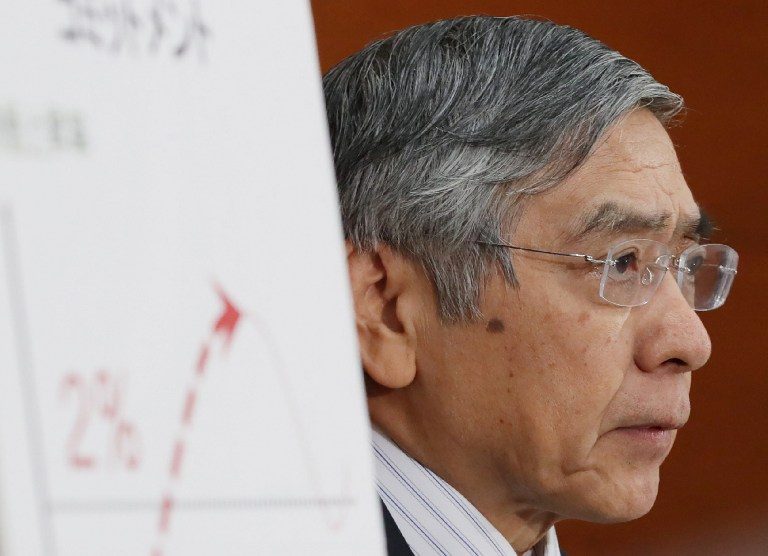SUMMARY
This is AI generated summarization, which may have errors. For context, always refer to the full article.

TOKYO, Japan – Business confidence among Japan’s largest manufacturers is at its lowest since Tokyo introduced measures to kick-start the struggling economy more than 3 years ago, a central bank survey showed Monday, October 3.
The Bank of Japan’s closely watched Tankan report comes after data showing weak growth in the second quarter and as soft inflation and spending figures on Friday, September 30, underscored the wobbly recovery.
The latest Tankan – a key gauge of Japan Inc’s health – missed market forecasts for a slight improvement in the mood among major firms.
Sentiment among big manufacturers is wallowing at its lowest levels since Prime Minister Shinzo Abe kicked off his growth blitz, dubbed Abenomics, in 2013.
The survey contradicts Tokyo’s view that the world’s number 3 economy is on the upswing, said Satoshi Osanai, senior economist at Daiwa Institute of Research.
“The economy is weak and certainly not in a recovery mode,” he added.
“This is more confirmation that Japanese firms are facing headwinds. Conditions remain tough.”
The BoJ’s quarterly survey of more than 10,000 companies is the most comprehensive indicator of how Japan is faring. It marks the difference between the percentage of firms that are upbeat and those that see conditions as unfavorable.
The reading for big manufacturers was unchanged at 6, while the level for big non-manufacturers fell to 18 from 19. However, confidence among medium and small business improved slightly.
Stock traders were unfazed. The benchmark Nikkei 225 index was up more than 1% in the afternoon Monday.
Officials are under intense pressure to deliver a boost to the economy with experts increasingly writing off Tokyo’s spend-for-growth policy.
On Friday, official data showed spending among Japanese households tumbled in August and consumer prices fell again – putting the Bank of Japan’s 2.0% inflation target further out of reach.
The target is a cornerstone of Abe’s faltering attempts to kickstart growth.
Wobbly recovery
Last month, the Bank of Japan, which launched a massive bond-purchase stimulus program in 2013, revealed yet another exotic weapon in its monetary policy arsenal.
After a hotly anticipated meeting, the bank said it would switch its emphasis from interest rates and concentrate its firepower on 10-year government bonds.
Governor Haruhiko Kuroda said the bank would buy as many or as few of these benchmark instruments as necessary to ensure the yield – the interest rate paid to holders – remained steady at around zero.
The bank said it would cut back on the number of longer dated bonds the bank holds. That should reduce the price of long-term securities, which – in turn – should increase their yield.
It was the latest effort to convince Japanese consumers that the price of goods and services will rise in the future.
Some analysts, however, said the move was an admission of defeat in the war on deflation and a warning of the limits of central bank power.
“I’m sure the Bank of Japan was hoping for a rebound in the latest Tankan – they must be in agony looking at this report,” said Hideo Kumano, an economist at Daiichi Life Research Institute and a former BoJ official.
Tokyo in July announced a whopping 28-trillion-yen ($280-billion) package aimed at kickstarting growth, after Britain’s June vote to quit the European Union sent financial markets into a tailspin and sparked a yen rally. The surge in the currency has taken a bite out of profits at Japanese firms that do business overseas.
But Abe’s promises to cut through red tape have been slower, and his plan to buoy Japan’s once-booming economy have looked increasingly unrealistic.
The economy contracted in the last 3 months of 2015, before bouncing back in January-March with a 0.5% rise on-quarter and then a 0.2% growth in April-June. – Rappler.com
Add a comment
How does this make you feel?
There are no comments yet. Add your comment to start the conversation.